Life Style
11 Different Types of Mattresses: Expert Guide for Better Sleep (2025)
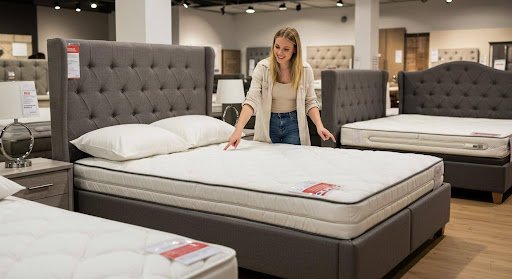
Did you know your mattress choice could be the difference between waking up refreshed or reaching for that third cup of coffee? With lifespans ranging from a mere 2 years to an impressive 25 years, picking the right mattress isn’t just about comfort – it’s about making a smart investment for your sleep and your wallet.
If you’re tossing and turning with back pain or your current mattress has simply seen better days, understanding the different types available is absolutely essential. From budget-friendly open coil options starting at just £99 to luxurious natural latex mattresses at £1,500+, each type brings something special to your bedroom.
Your perfect mattress match depends entirely on how you sleep. Side sleepers will love memory foam’s gentle pressure relief around shoulders and hips. Back sleepers? You’ll likely prefer the supportive firmness of innerspring options. And if you’re someone who sleeps hot, hybrid mattresses combining cooling springs with comfort foam layers could be your dream solution.
With most experts suggesting you should replace your mattress every 6-8 years, it’s worth taking the time to explore what’s available. Ready to discover your perfect sleep surface? This guide breaks down 11 different mattress types to help you make the right choice for blissful nights in 2025 and beyond.
Orthopaedic Mattress
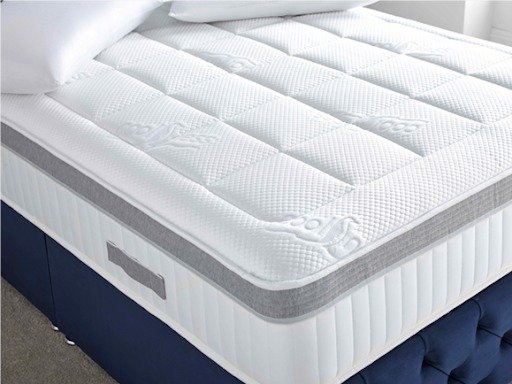
Looking for serious support while you sleep? Orthopaedic mattresses stand out as specially engineered sleeping surfaces designed to provide targeted support for your spine, joints, and entire body. The name comes from orthopaedics—the medical field focused on skeletal system corrections.
Orthopaedic Mattress Support Features
What makes orthopaedic mattresses special is their firm support system. These mattresses create a stable sleeping surface that keeps your spine properly aligned all night long. Unlike softer options that let you sink in too deeply, orthopaedic mattresses distribute your weight evenly across the surface, eliminating those uncomfortable pressure points.
Most orthopaedic mattresses come with:
- Firm to extra-firm support giving you the perfect push-back for proper sleeping posture
- Enhanced lumbar support with special core systems targeting your back, hips, and shoulders
- Uniform weight distribution to prevent pressure buildup and reduce tossing and turning
- Various construction options including pocket springs, open coil systems, high-density foam, or hybrid combinations
Orthopaedic Mattress Pros and Cons
Pros:
- Provides excellent support for back and joint pain
- Promotes proper spinal alignment and reduces stress on your spine
- Improves blood circulation by maintaining correct sleeping posture
- Reduces partner disturbance due to increased firmness
- Generally durable and long-lasting
Cons:
- May feel too firm for side sleepers who need more cushioning
- Typically more expensive than standard mattresses
- Can be heavy and difficult to move
- Not suitable for everyone, particularly those who prefer softer sleeping surfaces
Takeaway Tip: If you’re finding your orthopaedic mattress too firm initially, try adding a thin mattress topper for the first few weeks while your body adjusts to the new support level.
Orthopaedic Mattress Pricing
Your budget matters when shopping for orthopaedic support. These mattresses vary in price depending on construction quality, materials, and brand reputation. Entry-level options start around £200, with mid-range models between £400-£700, and premium versions exceeding £1,700. This investment reflects the specialised support structures and higher-density materials used in construction.
The price increases with size too—king and super king orthopaedic mattresses cost more than single or double versions due to increased material requirements.
Best Use Cases for Orthopaedic Mattress
Orthopaedic mattresses are your perfect match if you’re:
- Someone with chronic back, neck, or joint pain needing consistent support
- A back or stomach sleeper requiring firmer surfaces for proper alignment
- Recovering from injuries or surgeries where spinal support is crucial
- An older adult needing enhanced support for ageing joints
- A heavier individual benefiting from additional firmness and support
These mattresses can also help if you have specific medical conditions like arthritis, fibromyalgia, or scoliosis by providing the necessary support and pressure relief to improve mobility and reduce pain.
Before making your purchase, remember that firmness level should match your body weight and sleeping position—medium-firm options work best for combination sleepers, while firm or extra-firm versions are ideal if you’re a dedicated back sleeper.
Pocket Sprung Mattress
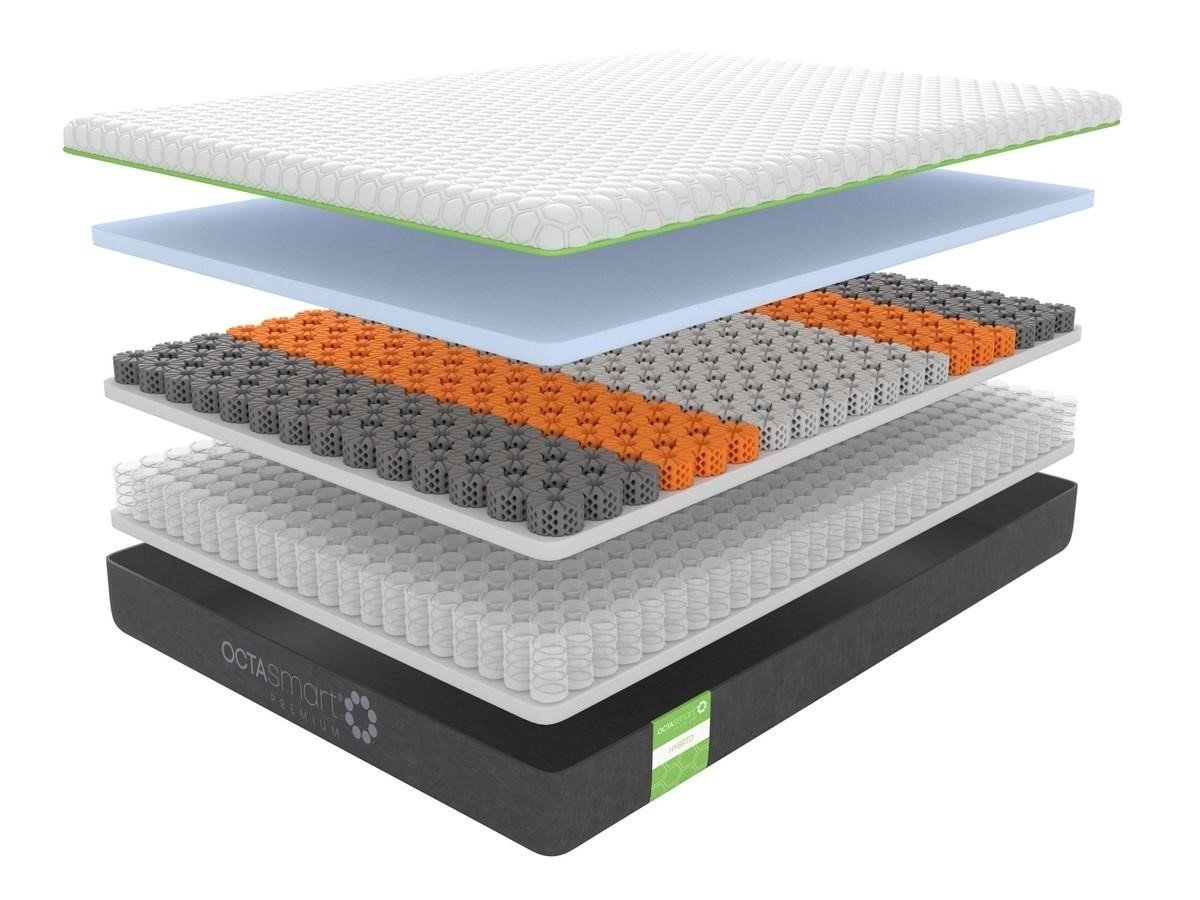
Looking for a mattress that gives you personal support exactly where you need it? Pocket sprung mattresses are among the most popular choices for good reason – they feature individually wrapped springs that work independently to support your body. This clever design is what sets them apart from traditional open coil systems, giving you enhanced comfort that lasts longer.
Pocket Sprung Mattress Construction
What makes these mattresses special? It’s all about those individual springs. Each spring sits in its own separate fabric pocket, typically made from polyester or cotton. Unlike open coil mattresses where all the springs are connected, these independent springs only respond when you put weight directly on them, allowing them to adapt perfectly to your body’s unique shape.
Most pocket sprung mattresses contain between 600-2000 springs in a king size, though luxury models can feature up to a whopping 10,000 springs or more! The manufacturing process is quite fascinating – hot metal is tempered into coil springs, then individually wrapped and connected. Higher quality models have these springs stitched together, while budget options often have them glued.
You’ll find many pocket sprung mattresses include lovely comfort layers above the springs, using materials like memory foam, latex, or natural fillings such as wool, cashmere and silk for that extra touch of luxury.
Pocket Sprung Mattress Pros and Cons
Pros:
- Adapts beautifully to your body’s shape for superior support
- Reduces that annoying movement transfer when your partner tosses and turns
- Breathes better than foam mattresses, keeping you cooler at night
- Maintains consistent firmness across the entire sleeping surface
- Helps keep your spine properly aligned while relieving pressure points
- Springs tend to keep their shape longer, giving you better durability
Cons:
- They’re heavier and can be a bit of a challenge to move
- Generally cost more than their open coil cousins
- Some models need regular rotation to ensure even wear
- The top-end models can make quite a dent in your wallet
Pocket Sprung Mattress Pricing
How much should you expect to spend? The price varies quite a bit depending on quality, spring count and materials:
- £500-£1000 for starter models with around 1000 synthetic pocket springs
- £1000-£2000 for mid-range options with approximately 1500 calico pocket springs
- £2000+ for premium versions featuring 1500-2000 vanadium-coated calico pocket springs
Don’t worry though – not all pocket sprung mattresses will break the bank. There are plenty of budget-friendly options that still deliver quality sleep.
Best Use Cases for Pocket Sprung Mattress
Who should consider a pocket sprung mattress? They’re particularly brilliant for:
- Couples sharing a bed, as they minimise that annoying bounce when your partner moves
- People with different body weights sharing the same mattress
- Those who tend to sleep hot and need the better air circulation these mattresses provide
- Back pain sufferers looking for proper spinal support
- Restless sleepers who move around during the night
- Anyone seeking durability – quality models last 7-10 years with proper care
Remember, your body weight matters more than your firmness preference when choosing the right pocket sprung mattress. Springs come in three main tensions: soft (1.2 gauge), medium (1.4 gauge), and firm (1.6 gauge), so choose according to your specific needs.
Open Coil Mattress
Different Types of Mattresses for Better Sleep,
Discover 11 different types of mattresses to improve your sleep quality. From budget-friendly to luxurious options, find the perfect mattress for your sleeping style and needs.
Looking for a mattress that won’t break the bank? Open coil mattresses might be your perfect match. Also known as traditional or Bonnell spring mattresses, these bedroom staples have been helping us sleep soundly since the late 19th century. They strike that sweet spot between affordability and basic support that many sleepers are searching for.
What makes open coil mattresses special?
The secret to open coil mattresses lies in their interconnected spring system. Unlike pocket sprung options, these mattresses feature springs that are all linked together by wire rods running from side to side. The springs and connecting rods are typically shaped from a single sheet of steel, creating one unified support system that works together.
Most open coil mattresses contain between 300-500 springs – far fewer than their pocket sprung cousins. What determines how firm they feel isn’t the spring count, but rather the thickness (gauge) of the wire used. Want something really supportive? Look for a lower gauge number which indicates thicker wire – 12-gauge provides very firm support, whilst a 13.5-gauge offers a slightly softer feel.
Open Coil Mattress Pros and Cons
Pros:
- Your wallet will thank you: Manufactured at lower cost, making them the budget-friendly champions of the mattress world
- Easy to manoeuvre: With fewer springs than other mattress types, they’re lighter and easier to rotate
- Surprisingly supportive: Often used in orthopaedic settings thanks to their firm, supportive nature
- Sleep cooler: The open design allows better airflow throughout the mattress – perfect if you tend to sleep hot
Cons:
- The ripple effect: The interconnected springs mean when your partner moves, you’ll feel it too
- Lumps and bumps: Larger gaps between springs can lead to dips developing over time
- Not a lifetime companion: Typically last between 5-8 years, shorter than other mattress types
- The dreaded dip: Springs may lose their shape quicker, causing that annoying “roll-together” in the middle
What will an open coil mattress cost me?
Open coil mattresses stand out as the most affordable option you’ll find. Basic models start from as little as £99, with mid-range options typically between £250-£400. Want something fancier? Premium open coil mattresses with added features like memory foam layers can cost over £1,000, though at this price point, most shoppers opt for different mattress types altogether.
Who should choose an open coil mattress?
Despite their limitations, open coil mattresses shine in several specific scenarios. They’re excellent choices for children’s bedrooms, providing proper spinal alignment to support growing bodies. Their lightweight nature and affordability also make them perfect for guest rooms that only see occasional use.
Struggling with back pain but need firm support? Certain specialised open coil systems like Silentnight’s Miracoil can provide targeted support where you need it most. These mattresses also suit those who prefer a bouncier, more responsive feel compared to memory foam options.
Don’t forget proper care is essential – rotate your open coil mattress every 1-2 times yearly if it’s new, increasing to 2-5 times for older models. With this simple maintenance, your open coil mattress can be a practical, economical choice that serves you well for years to come.
Memory Foam Mattress
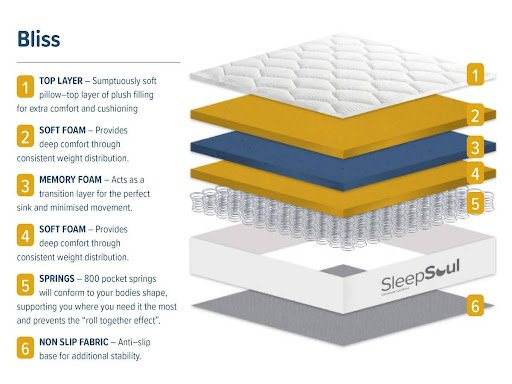
Looking for a mattress that feels like it was made just for you? Memory foam might be your perfect match! Originally created by NASA in the 1970s to cushion astronauts during take-off, this clever material has become one of the most loved options in bedrooms across the country. What makes it special? Memory foam responds to both your body heat and weight, creating a sleeping surface that’s uniquely yours.
How Does Memory Foam Work?
Ever wondered why memory foam feels so different from other mattresses? It’s all about that viscoelastic polyurethane foam that softens when it meets your body heat. This creates what sleep experts call a “stable cradle” effect – areas where your body touches become softer, while the rest stays firm for support.
Memory foam comes in three main types:
- Traditional memory foam: The original version that hugs your body but might feel warm
- Open-cell memory foam: Imagine tiny air pockets throughout the foam for better cooling
- Gel memory foam: Contains cooling gel beads to help whisk away body heat
Most memory foam mattresses use a clever three-layer design: a soft comfort layer on top, a transition layer in the middle, and a firmer support core at the bottom.
What You’ll Love (And What You Might Not)
The Good Bits:
- Melts away pressure points by spreading your weight evenly
- Your partner can toss and turn all night and you’ll barely notice
- Naturally keeps dust mites and allergens at bay
- No squeaky springs to disturb your sleep
- Could be your back pain’s new best friend
The Not-So-Good Bits:
- Can feel warm, though newer versions are much cooler
- That “new mattress smell” might hang around for a few days
- Some people don’t like the “sinking in” feeling
- Quite heavy when you need to move it
- Doesn’t mix well with spills or moisture
What Will It Cost Me?
Ready for some good news? Memory foam mattresses come in options for every budget. You can find basic models from £150-£200, while mid-range options typically cost between £200-£500. Looking for something truly luxurious? Premium versions from well-known brands can reach £1,500-£2,000.
TOP TIP: Higher density memory foam (5 lbs/ft³ or above) costs more but typically lasts longer – often 8-12 years with proper care.
Who Sleeps Best on Memory Foam?
Memory foam mattresses are PERFECT for:
- Side sleepers who need that extra cushioning around shoulders and hips
- Anyone with achy joints or chronic pain
- Light sleepers who wake up when their partner moves
- Allergy sufferers looking for relief
- Those who want support that feels tailor-made for their body
Don’t forget to consider your sleeping position, body weight, and whether you sleep hot when choosing your memory foam density and firmness level. Your perfect night’s sleep is worth taking the time to find just right!
Hybrid Mattress
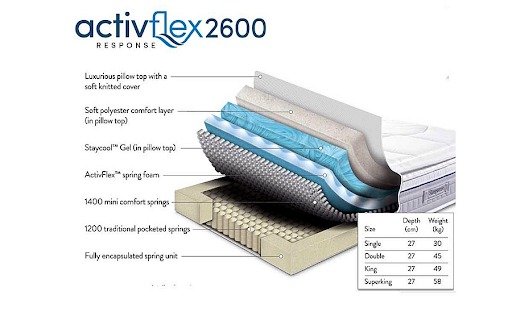
Looking for the best of both worlds? Hybrid mattresses might be your perfect sleep solution. These clever designs combine the bouncy support of traditional springs with the cradling comfort of foam or latex layers. It’s like getting two mattresses in one cosy package!
Hybrid Mattress Layers
Your hybrid mattress isn’t just thrown together – it’s carefully crafted with distinct layers that work together for your comfort:
- Base layer: A sturdy foundation of high-density foam that keeps everything stable and supported.
- Coil support core: The heart of your hybrid! These pocketed coils (sometimes called Marshall coils) move independently, cutting down on that annoying motion transfer when your partner tosses and turns.
- Transition layer: Think of this as the peacekeeper between your coils and comfort layers – usually made from polyfoam or firmer foam to create the perfect buffer.
- Comfort layer: Here’s where the magic happens! This top section might contain memory foam, latex, polyfoam, microcoils, or clever combinations of these materials to cradle your body just right.
- Optional pillow top: Some luxury hybrids add this extra cushioning layer sewn right into the top – pure indulgence!
Hybrid Mattress Pros and Cons
Pros:
- Sleep cooler thanks to better airflow through the spring system
- Move more easily with that responsive, slightly bouncy surface
- Make use of every inch with sturdy edge support all around
- Enjoy minimal partner disturbance compared to traditional spring mattresses
- Find comfort in any sleeping position – they’re wonderfully versatile!
Cons:
- Definitely on the heavy side, making them tricky to move or flip
- Cost more than all-foam models on average
- Might develop some spring noise over time
- Typically last 6-8 years – shorter than memory foam options
Hybrid Mattress Pricing
Ready for the price tag? A queen-size hybrid typically costs between £952.99 and £1588.32, with luxury models reaching up to £2382.48. What affects the price? Everything from comfort layer thickness to coil quality, special cooling features, and whether natural materials are used.
Best Use Cases for Hybrid Mattress
You’ll love a hybrid mattress if you’re:
- A couple needing that perfect balance of motion isolation and bounce
- A back or front sleeper looking for support with a touch of cushioning
- Someone who sleeps hot and needs better airflow
- Carrying a bit more weight and needing extra support without feeling like you’re sleeping on a board
- Torn between loving memory foam’s hug but missing that traditional mattress bounce
Don’t forget, a medium hybrid works brilliantly for combination sleepers who change positions throughout the night, whilst medium-firm versions are better suited to dedicated back and front sleepers.
Latex Mattress
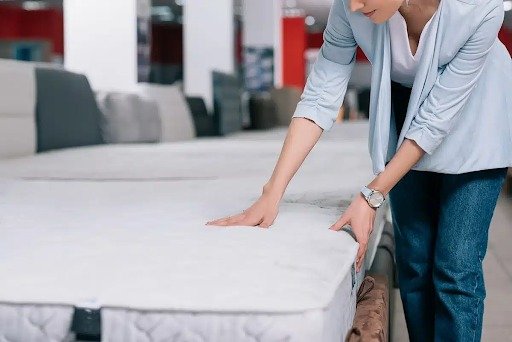
Remember when mattresses only lasted a few years before sagging? Latex mattresses are changing the game with impressive lifespans of 15-20 years – outlasting nearly every other option on the market. Harvested from the sap of rubber trees, this natural material combines bounce-back resilience with cloud-like comfort that’s winning over eco-conscious sleepers everywhere.
Latex Mattress Composition
Your latex mattress options come in three distinct varieties:
- Natural latex: Tapped from rubber trees and processed with minimal additives, contains 90-94% pure latex
- Synthetic latex: Created from petroleum-based chemicals like styrene and butadiene
- Blended latex: Typically a mix of 30% natural and 70% synthetic latex
The way your latex mattress feels depends largely on how it’s made:
- Dunlop method: Creates a denser, firmer foam that’s more supportive at the bottom and softer up top
- Talalay method: Uses vacuum-sealing and flash-freezing for a lighter, more consistent feel throughout
Latex Mattress Pros and Cons
Pros:
- Exceptional durability, with many lasting 12-20 years with proper care
- Naturally fights allergens and dust mites – perfect for sensitive sleepers
- Keeps you cool all night with its breathable, open-cell structure
- Bounces back instantly when you move, unlike memory foam’s slow response
- Kinder to the planet, using renewable resources rather than petroleum
Cons:
- Higher price tag upfront than most other mattress types
- Surprisingly heavy, making rotation and moving day a challenge
- New mattresses may have a natural rubber smell initially
- Fewer firmness options compared to other mattress varieties
Latex Mattress Pricing
Your budget will determine which latex option suits you best:
- Entry-level (mostly synthetic): £500-£850
- Mid-range (blended): £850-£1,500
- Premium (natural): £1,500-£2,400+ for king and super king sizes
Best Use Cases for Latex Mattress
Latex mattresses are your perfect match if you’re:
- Dealing with allergies or asthma and need a naturally hypoallergenic sleep surface
- Seeking gentle pressure relief for persistent back or joint pain
- Someone who sleeps hot and needs natural cooling properties
- Looking to make more environmentally friendly purchasing decisions
- Sharing your bed with a partner and need minimal motion transfer
Organic Mattress

Looking for a healthier night’s sleep? Organic mattresses are gaining popularity as more of us become concerned about what we’re actually sleeping on for those 8 hours every night. These natural sleep surfaces use materials grown without synthetic pesticides or harmful manufacturing processes – perfect if chemical exposure during sleep keeps you up at night.
What makes a mattress truly organic?
Don’t be fooled by clever marketing! The term “organic” in mattresses refers to materials certified to strict standards. When shopping for your organic sleep sanctuary, look for these essential certifications:
- GOTS (Global Organic Textile Standard): Ensures textiles contain at least 95% certified organic fibres with environmentally responsible manufacturing
- GOLS (Global Organic Latex Standard): Verifies latex contains minimum 95% certified organic raw material
Your organic mattress should feature:
- Organic cotton covers grown without harmful pesticides
- Organic wool working as a natural fire barrier and temperature regulator
- Organic latex harvested sustainably from rubber trees
- Natural materials like coconut coir for additional support
First and foremost, beware of “natural” labels without proper certifications – these likely contain fewer synthetic materials but aren’t truly organic.
Organic Mattress Pros and Cons
Pros:
- Chemical-free sleep surface without pesticides or harmful additives
- Naturally hypoallergenic, perfect if you suffer from allergies or breathing issues
- Superior breathability from natural materials keeping you cooler at night
- Environmentally friendly with biodegradable components
- Impressive lifespan reaching up to 25 years versus just 10-15 years for conventional options
Cons:
- Significantly pricier than conventional alternatives
- Heavier and more challenging to move around
- Fewer firmness options compared to synthetic mattresses
- Rarely achieve 100% organic status due to manufacturing requirements
How much should you expect to pay?
Organic mattresses represent a premium investment, with prices reflecting certified materials and sustainable production. Your wallet should be prepared for:
- Entry-level: £794-£1,100
- Mid-range: £1,100-£1,500
- Premium: £1,500-£2,400+ for larger sizes
Anything substantially cheaper? You might want to question its authentic organic certification.
Who benefits most from organic mattresses?
If you fall into any of these categories, an organic mattress could be your dream match:
- Suffer from chemical sensitivities or allergies
- Sleep hot and need natural temperature regulation
- Care deeply about environmental sustainability
- Want to invest in long-term durability
- Worry about potential health impacts from conventional mattress chemicals
The superior breathability and moisture-wicking properties make organic options especially suitable if you struggle with night sweats. Your body will thank you for the natural materials that work with your temperature rather than against it.
Hypoallergenic Mattress

Ever woken up sneezing or with itchy eyes? Your mattress might be the culprit! For the millions of allergy sufferers across the UK, the right mattress isn’t just about comfort – it’s about being able to breathe easily throughout the night.
What makes a mattress truly hypoallergenic?
Hypoallergenic mattresses are your bedroom allies against those pesky allergens, incorporating clever design features that keep irritants at bay:
- Special anti-allergy barriers that stand guard against dust mites, mould and unwanted bacteria
- Dense, tightly-woven materials like memory foam and latex that naturally block dust mites from setting up home
- Clever antimicrobial treatments such as Fresche® Bioscience technology that actively fights against fungal growth
- Removable, washable covers that let you keep allergens at arm’s length
- Moisture-wicking fabrics that prevent the damp conditions where mould and bacteria thrive
The result? A much cleaner sleeping environment where you can rest easy without those midnight sneezing fits!
Hypoallergenic Mattress Pros and Cons
Pros:
- Dramatically reduces allergy symptoms by creating a barrier against dust mites
- Keeps your sleep space naturally cleaner with antibacterial properties
- Many include special antimicrobial technology that stops harmful bacteria in their tracks
- Perfect for anyone with asthma or breathing difficulties
- Stays fresher for longer with fewer unpleasant odours
Cons:
- Won’t completely eliminate all allergens – just reduces them significantly
- Might need additional allergy-fighting bedding for best results
- Typically costs more than standard mattress options
- Some models might sleep warmer, which isn’t ideal if you’re prone to night sweats
What you’ll pay for hypoallergenic comfort
The price of allergy relief varies depending on what you’re looking for:
- Budget-friendly options: £150-£300
- Mid-range models with extra features: £300-£700
- Premium versions with all the bells and whistles: £700-£1,500+
Who should choose a hypoallergenic mattress?
These mattresses are particularly perfect for:
- Anyone diagnosed with allergies or asthma looking for symptom relief
- People with breathing problems who need the cleanest possible air while sleeping
- Children, whose developing immune systems need extra protection
- Those with sensitive skin that reacts to irritants
- Anyone wanting a generally cleaner, more hygienic sleep surface
Don’t forget, for the ultimate allergy-fighting bedroom, pair your hypoallergenic mattress with matching pillows and a quality mattress protector – your lungs will thank you!
Gel Memory Foam Mattress
Do you wake up feeling like you’ve spent the night in a sauna? If traditional memory foam leaves you hot and bothered, gel memory foam might be your perfect cooling solution. This clever mattress type combines the body-hugging comfort of viscoelastic foam with innovative cooling gel to tackle memory foam’s biggest problem – heat retention.
Gel Memory Foam Cooling Technology
Your comfort is all in the details with these mattresses. Manufacturers add cooling gel in three main ways: tiny gel beads infused throughout the foam, swirls of liquid gel mixed into the material, or a dedicated gel layer sitting right at the top. The genius part? This gel actively pulls heat away from your body as you sleep.
The technology works through either thermal gel (instantly cool to touch) or phase-changing materials that transform from solid to liquid as they absorb your body heat. This clever process helps maintain a comfortable temperature all night long, making these mattresses particularly wonderful for anyone who sleeps hot.
Gel Memory Foam Mattress Pros and Cons
Pros:
- Significantly cooler sleeping surface than standard memory foam
- Bounces back to shape faster, making movement easier
- Excellent pressure relief that cradles your shoulders and hips
- Minimal partner disturbance – perfect if you share your bed
- Adapts well to different sleeping positions
Cons:
- Expect to pay more than for traditional memory foam
- The cooling effect may fade over time
- Heavier and trickier to rotate or move
- Might not last as long as some other premium mattress types
Gel Memory Foam Mattress Pricing
Your wallet will feel the difference between gel memory foam and standard memory foam. A quality queen-size model typically ranges from £952.99 to £2299.09. The exact price depends on extra features like hybrid construction or advanced cooling technologies.
Best Use Cases for Gel Memory Foam Mattress
Gel memory foam mattresses are your perfect match if:
- You’re a hot sleeper who regularly kicks off the covers
- You love memory foam’s pressure relief but hate waking up sweaty
- You have conditions that increase body temperature or cause night sweats
- Your bedroom feels like a tropical paradise (or you live somewhere warm)
- You want a responsive surface that doesn’t leave you feeling stuck
Sleep experts suggest hybrid models combining gel memory foam with coil layers give the best overall cooling performance. Don’t forget, your sheets and bedroom temperature play a part in staying cool too!
Mattress in a Box
Looking for a hassle-free way to get a new mattress delivered right to your door? Mattress in a box options have become incredibly popular in recent years – and for good reason! These clever beds arrive compressed and vacuum-sealed in a surprisingly compact package, completely changing how we shop for one of our most important bedroom essentials.
Mattress in a Box Delivery and Setup
Wondering how these rolled-up mattresses actually work? The setup process is remarkably straightforward. You’ll need to carry the box to your bedroom first – while they’re compact, these packages can weigh between 60-150 pounds, so you might want a helping hand. Once in position, simply unbox your new mattress and carefully cut away the plastic wrapping. Then comes the fun part – watching your mattress magically expand before your eyes!
Full expansion typically takes between a few hours and 48 hours to reach its proper size and firmness. Most manufacturers suggest waiting at least 24 hours before sleeping on your new bed to ensure it’s fully expanded. Don’t forget to open some windows during this process too – this helps clear away that initial “new mattress smell” that comes from the manufacturing and packaging process.
Mattress in a Box Pros and Cons
Pros:
- Makes navigating tight staircases and narrow doorways so much easier
- Often more affordable without those hefty showroom markups
- No awkward delivery scheduling – it simply arrives at your door
- Generous trial periods (typically 100 days) with hassle-free returns
- More environmentally friendly with fewer delivery journeys
Cons:
- You can’t try before you buy (though some brands now have showrooms)
- Those boxes are heavier than they look and might need two people to move
- Initial “new mattress smell” can hang around for several days
- You’ll need to wait before sleeping on it
- Some concerns about whether compression affects long-term durability
Mattress in a Box Pricing
What should you expect to pay? Prices vary widely depending on materials and brand reputation. Entry-level options start around £200, mid-range models typically cost between £500-£1000, whilst premium versions can exceed £1500. Even with premium options, you’re generally getting better value compared to traditional retail mattresses of similar quality – those showroom costs have to be paid for somehow!
Best Use Cases for Mattress in a Box
Boxed mattresses are perfect for:
- City dwellers with narrow hallways and tricky staircases
- First-time homebuyers furnishing on a careful budget
- Online shopping enthusiasts who prefer browsing from their sofa
- People in the middle of moving who need temporary mattress storage
- Anyone looking for quality sleep without the premium price tag
Dual-Sided Mattress
Remember those mattresses your grandparents had? The ones you could flip over? Dual-sided mattresses are making a comeback, and for good reason! These traditional designs offer fantastic longevity through regular flipping, giving sleep-conscious shoppers excellent value for money.
Dual-Sided Mattress Functionality
Dual-sided mattresses give you usable sleep surfaces on both sides with a supportive core sandwiched in the middle. You’ll find two main types:
- Same firmness: Identical feel on both sides, perfect for extending your mattress lifespan
- Dual firmness: Different comfort levels on each side (typically medium-soft and medium-firm), brilliant for when your comfort needs change
Most flippable mattresses use pocket springs or open coil systems at their core, providing consistent support whichever side faces up. Memory foam and hybrid mattresses rarely work well as dual-sided options because their carefully layered construction needs to stay in a specific orientation.
Dual-Sided Mattress Pros and Cons
Pros:
- Substantially longer lifespan compared to one-sided alternatives
- Better weight distribution, keeping those annoying body impressions and sagging at bay
- Greater value for money through extended durability
- Customizable firmness options with dual-firmness models
- More environmentally friendly by reducing how often you need a replacement
Cons:
- Heavier construction makes flipping a challenge – you’ll often need a second pair of hands
- Regular maintenance needed to get the maximum benefit
- Generally higher initial cost than comparable one-sided models
- May not work with adjustable bed frames
Dual-Sided Mattress Pricing
Expect to pay a bit more upfront for the added durability. Entry-level models start around £500, with mid-range options between £800-£1200, and premium versions exceeding £2000.
Best Use Cases for Dual-Sided Mattress
Dual-sided mattresses are particularly wonderful for:
- Growing children whose firmness needs change as they develop
- Guest rooms accommodating visitors with different comfort preferences
- Couples who can’t agree on firmness levels (especially the dual-firmness models)
- Value-conscious shoppers wanting something that will last
- Those whose comfort needs change due to health conditions or pregnancy
Don’t forget, to get the most from your dual-sided mattress, you should flip it every 3-6 months for even wear and the longest possible lifespan.
Conclusion
Your bedroom should be your own personal sanctuary, and your mattress plays a starring role in creating that perfect sleep haven. Throughout this guide, we’ve explored eleven distinctly different mattress types, each with their own special benefits for different sleepers. Whether you’re looking for something that keeps you cool at night or need extra support for your back, there’s a perfect match waiting for you.
The way you sleep matters most when choosing your ideal mattress. Side sleepers will find memory foam or hybrid options cradle their shoulders and hips beautifully. If you’re a back sleeper, you’ll likely prefer the firmer feel of orthopaedic or pocket sprung designs. And those who sleep hot? Look to latex, gel memory foam, or hybrid options with their superior breathability.
Budget considerations are important too. From budget-friendly open coil mattresses starting at just £99 to premium organic options exceeding £2,400, there’s something for every wallet. Remember though, your mattress is worth viewing as a long-term investment when you think about how much time you’ll spend on it!
The lifespan difference between mattress types is quite eye-opening. Latex and organic options truly stand out with impressive lifespans reaching 20-25 years – essentially doubling your value for money despite higher initial costs. On the other hand, open coil and hybrid models typically need replacing after just 5-8 years.
Don’t forget to factor in your health needs when making your choice. If allergies keep you up at night, hypoallergenic, latex, or organic mattresses offer natural resistance to dust mites and other sleep-disrupting allergens. Suffering with back pain? Orthopaedic or memory foam models provide the targeted support you need for more comfortable sleep.
Try before you buy whenever possible, take advantage of those trial periods, and check reviews from sleepers with similar needs to your own.
The perfect mattress for you balances comfort, support, durability and budget in a way that suits YOUR unique needs. With the knowledge from this guide, you can rest easy knowing you’re making an informed choice for years of blissful, rejuvenating sleep – perhaps the most important investment you’ll make for your wellbeing.
-

 Celebrity1 year ago
Celebrity1 year agoWho Is Jennifer Rauchet?: All You Need To Know About Pete Hegseth’s Wife
-

 Celebrity1 year ago
Celebrity1 year agoWho Is Mindy Jennings?: All You Need To Know About Ken Jennings Wife
-

 Celebrity1 year ago
Celebrity1 year agoWho Is Enrica Cenzatti?: The Untold Story of Andrea Bocelli’s Ex-Wife
-

 Celebrity1 year ago
Celebrity1 year agoWho Is Klarissa Munz: The Untold Story of Freddie Highmore’s Wife
















